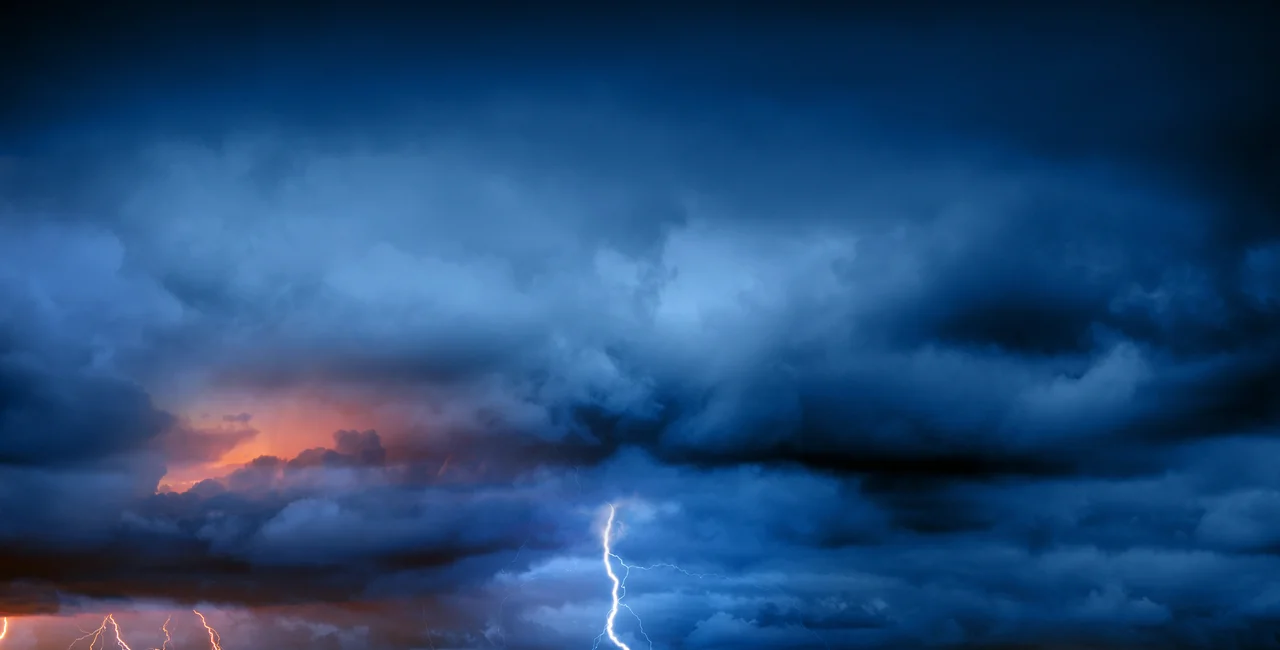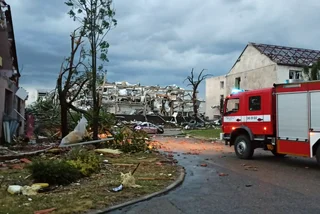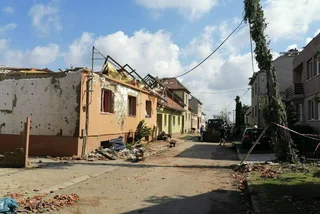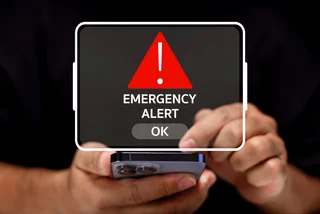Parts of the Central Bohemia, South Bohemia, and the Plzeň regions experienced very strong thunderstorms accompanied by torrential rain and hail with wind gusts of around 90 kilometers per hour on Tuesday morning. More thunderstorms are expected across the country in the early evening and overnight on Wednesday, including torrential rain, strong winds and hail.
But the Czech Hydrometeorological Institute (ČHMÚ) says it is unlikely that the storms will bring severe tornadoes with them, and that there is no reason to expect that a pattern of increased tornado activity has started.
Hot weather will prevail in the Czech Republic during the day, especially in Moravia and Silesia, with afternoon temperatures exceeding 31 degrees Celsius. Because of these high temperatures, a low danger alert will also be in effect at noon for the South Moravian, Olomouc, Moravian-Silesia and much of the Zlín regions.
Meteorologists expect more storms in the evening. In Bohemia, torrential rain may occur locally with totals of around 30 millimeters, with hail and wind gusts of around 70 kilometers per hour.
V úterý 29. 6. veÄer a v noci na stÅ™edu 30. 6. se vyskytnou v západnà polovinÄ› ÄŒech velmi silné bouÅ™ky, které mohou být lokálnÄ› doprovázeny pÅ™Ãvalovým deÅ¡tÄ›m s úhrny kolem 50 mm, nárazy vÄ›tru kolem 25 m/s (90 km/h) a kroupami.
— ÄŒeský hydrometeorologický ústav (ÄŒHMÚ) (@CHMUCHMI) June 28, 2021
Vysvětlenà k vydané výstraze ve videu. pic.twitter.com/cmCpRYMPAr
Thunderstorms expected in Prague and Central Bohemia
For Prague, Central Bohemia, South Bohemia, Plzeň, Karlovy Vary, Ústí nad Labem, Liberec and Hradec Kralove regions, a high risk of very strong thunderstorms is also in force from 8 p.m. on Tuesday until Wednesday morning.
“On Tuesday, June 29, in the evening and into Wednesday, June 30, there will be very strong thunderstorms in the western half of Bohemia, which may be locally accompanied by torrential rain with totals around 50 mm, wind gusts around 25 meter/econd (90 km/h) and hail,” the ČHMÚ said on Twitter.
At the same time, river levels may rise in these regions, but water should not spill over the banks. Meteorologists say people should avoid swimming or boating on these areas.
Tornadoes unpredictable but also rare
While meteorologists can predict many types of dangerous storms such a supercells, they cannot predict when a tornado will strike, how long it will last, or what its route will be, the Czech Hydrometeorological Institute (ČHMÚ) said in response to criticism that it failed to warn in advance about the tornado that hit part of South Moravia.
The very strong tornado stormed the South Moravian districts of Břeclav and Hodonín, devastating several villages, killing six and injuring dozens of people and causing material damage now estimated up to CZK 15 billion.
The ČHMÚ wrote in a press release that supercells need not be accompanied by extreme phenomena, including tornadoes.
“Some years no tornadoes appear (the last one was detected in 2018). In contrast, dozens of supercells are detected every year. We issue warnings based on all available evidence, including forecasts of possible supercells. Not every supercell is necessarily dangerous. However, we usually issue warnings for dangerous supercells, i.e. strong wind gusts, torrential rainfall, hail,” the ČHMÚ stated.
A supercell is a rare type of thunderstorm that rotates and has a strong updraft. It generally lasts two to four hours.
Meteorologists issue warnings of the supercells' dangerous accompanying phenomena such as wind gusts, torrential rains, and hail. Nevertheless, they cannot predict accurately in which districts and villages these phenomena will appear, and when.
"In the real time, we can estimate which of the current storms are developing into supercells," they wrote.
European weather radar not set to detect tornadoes
The current state of research does not make it possible to forecast which supercells, not only in the Czech Republic but anywhere in the world, will bring about a tornado. Meteorological radars that have been used in Europe are most often even unable to distinguish an arising tornado.
"We learn about a possible occurrence of a tornado only in the moment when the whirlwind emerges from a storm and starts reaching the land surface," the ČHMÚ wrote.
Only some whirlwinds touch the ground and develop into a tornado. When this happen it is too late for an institution to issue a warning, and a reaction is necessary in the place where the tornado occurred, the experts added.
“It is impossible to predict how long an already formed tornado will remain on the earth's surface and therefore which way it will move over the earth and cause damage,” the ČHMÚ wrote.
They said that the in the United States a different type of meteorological radar is used primarily to seek to detect tornadoes, which occur there much more frequently. European radars, on their part, are constructed mainly to monitor precipitation.
Nevertheless, even in the U.S. experts can forecast where exactly a tornado will appear. “Their first warnings mention the risk of strong storms with possible tornadoes in areas of a size comparable with Czech regions. The warning of a tornado alone comes only few minutes before its occurrence,” the ČHMÚ wrote.
Moravian tornado not attributed to climate change
The tornado that devastated a part of south Moravia on June 24 cannot be ascribed to the global climate change. “It is a natural fluctuation in the air circulation, like in the case of floods, droughts, and heat waves,” the ČHMÚ wrote.
“In any case, this occurrence does not mean that we should expect more of these phenomena. Another comparably strong tornado is unlikely, but of course cannot be ruled out (this year, in a few years, this century), just as any other extreme natural phenomenon cannot be ruled out,” the ČHMÚ wrote.












 Reading time: 4 minutes
Reading time: 4 minutes 





























